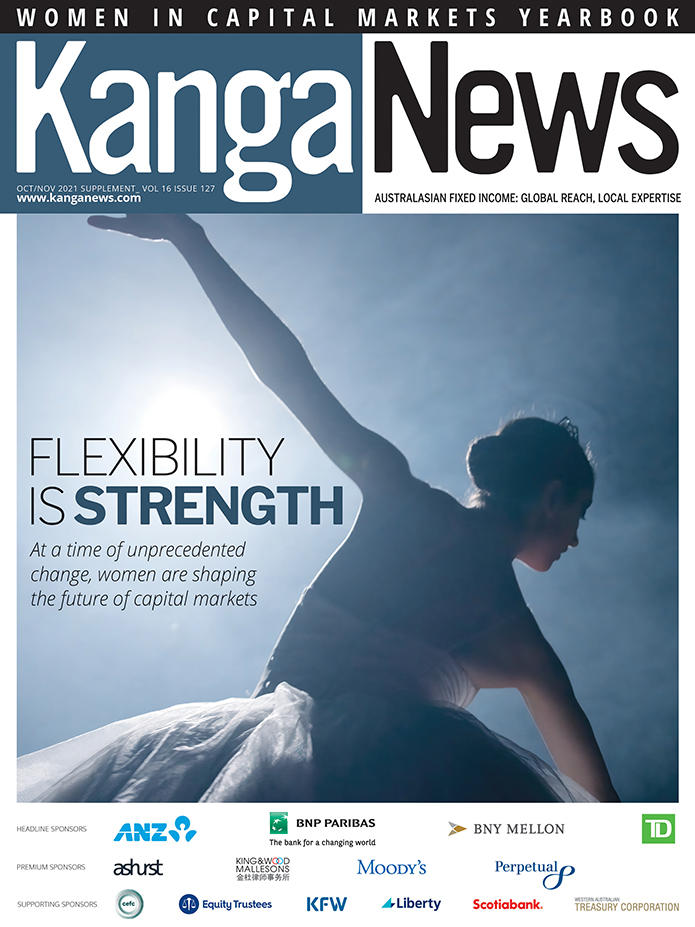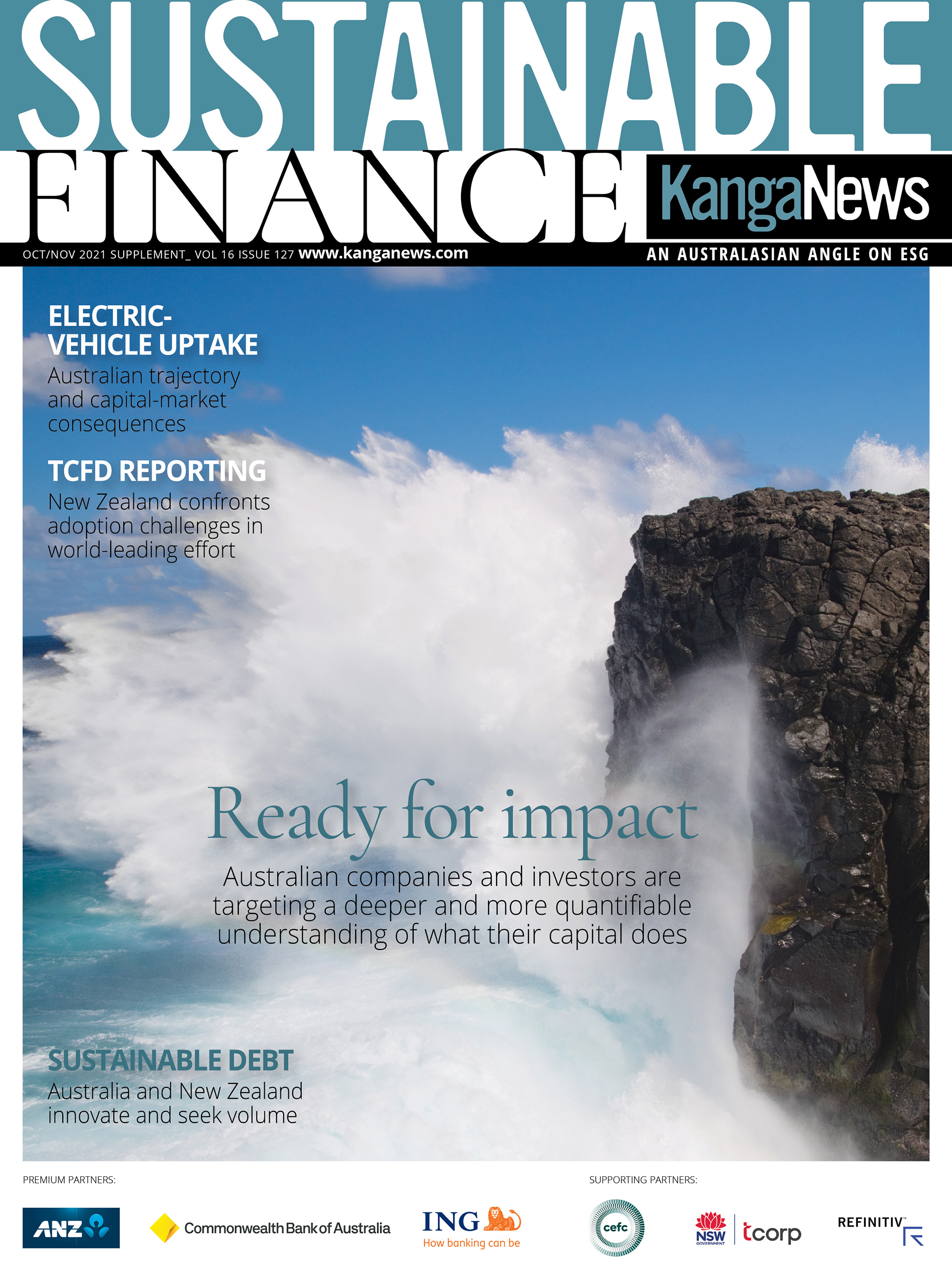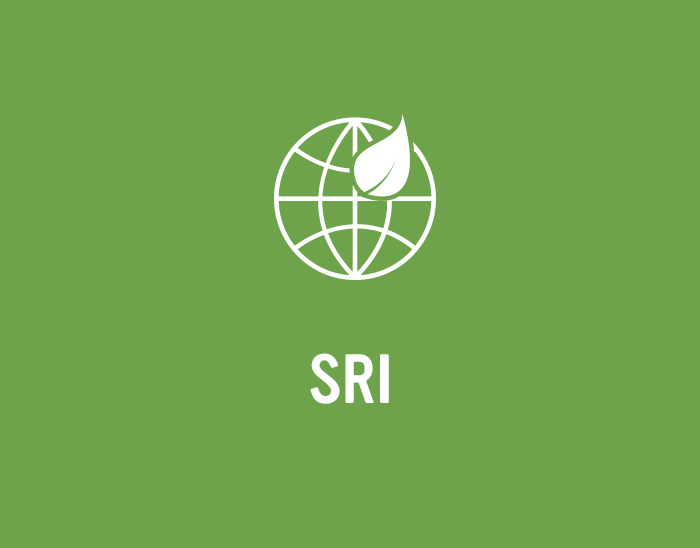
Banks add ESG derivatives to sustainability-linked toolkit
As the sustainable-finance market evolves, global investment banks are seeking ways to expand its principles across a wider range of instruments. Deploying their derivatives expertise around this new breed of fixed income, they hope simultaneously to develop a new asset class and push clients to reduce emissions.
Daniel O'Leary Editor KANGANEWS
Like many sustainable-finance developments, environmental, social and governance (ESG)-linked derivative products took off in Europe. But they are now also finding their feet in the Asia-Pacific region’s green bond and loan markets.
In October, National Australia Bank (NAB) disclosed it had executed its first Australian ESG-linked derivative with Ramsay Health Care. The interest-rate swap is directly linked to the sustainability criteria found within Ramsay’s recently syndicated loan facility. NAB has been touting its expertise in the field since early September, following success in the UK where the bank has already arranged six transactions for European clients.
NAB says growth in Europe’s sustainability-linked loan (SLL) and sustainability-linked bond (SLB) markets drove the derivatives innovation, which it first started offering in 2020.
Banks are offering ESG derivatives in two distinct formats – as vanilla instruments, such as an FX forward with a rider attached, or interest-rate swaps (IRS) written against SLBs or SLLs with KPIs linked to sustainability targets. The former is typically harder to structure, market users say, as sustainability targets and reporting are difficult to quantify and standardise.
Aydin Constantinidis, derivative solutions at NAB in London, says the majority of products executed to date have been swaps written against SLLs.
“A sustainability-linked bank loan generally has a discount spread and a midpoint, and then the borrower will pay overs if it doesn’t achieve its KPIs,” Constantinidis says. “With derivatives, it tends to start at the vanilla price with a discount rather than two-way pricing – this is the most dominant structure we have seen.”
With interest-rate swaps, the bank counterparty applies a discount to the clearing price of the transaction based on the achievement of KPIs through the life of the contract. “If a borrower wants to reduce greenhouse-gas emissions by a set amount and it achieves this, it then receives a discount on its interest rate,” Constantinidis explains.
“We want to partner with customers that are leading the sustainability journey themselves, because we know they are going to grow and be successful in future. We are happy to give back a bit knowing that doing so is an investment in future growth.”
While a completed contract has yet to be publicly disclosed in Australia, deals have been completed in Asia (see box).
Market participants believe growth in the complementary ESG derivatives space will track the growing SLB and SLL markets. While use-of-proceeds (UOP) green bonds continue to provide the bulk of ESG-themed bond-market transaction volume, SLB issuance is emerging fast and may prove relevant to a much wider group of corporate borrowers than the UOP format. SLL volume is harder to track, but 2021 has clearly been a bumper year for issuance in Australia.
Damian Underwood, head of consultative risk management and FX structuring at ANZ in Sydney, says ESG derivatives are structured against bonds and loans and cannot be entered into on a standalone basis. “The negotiation of a loan takes 6-8 weeks minimum and all – from ANZ’s perspective – the performance targets have to be stretch targets without any greenwashing,” he notes. “We want to push borrowers to meet ambitious targets and the price will adjust accordingly if they do or do not.”
As the ESG derivatives market is still developing, banks say they are keeping the risk in-house. This entails effectively taking a lower return when borrowers reach their KPIs. A secondary market could develop in future, but this will require scale. “I have no doubt hedging ESG risk will at some point become common. But a market will need to be developed in order to hedge,” Constantinidis says.
John Chen, head of commodity sales, ASEAN at Standard Chartered in Singapore, says a secondary market is essential if the market is to scale. “I think many banks are looking for a secondary market and I think it can be achieved – we should be able to find the other side,” he comments.
“A standard sustainability-linked bank loan generally has a discount spread and a midpoint, and then the borrower will pay overs if it doesn’t achieve its KPIs. With derivatives, it tends to start at the vanilla price with a discount rather than two-way pricing – this is the most dominant structure we have seen.”
BANK INCENTIVES
The idea that banks will be willing to carry on drafting contracts that lower their returns seems implausible. On the other hand, banks have been willing to extend SLL facilities where their financial incentives are technically more aligned with borrowers missing KPIs than achieving them. In both cases, the value for the banks is more about aligning with long-term value and mitigating climate risk.
David Jenkins, global head of sustainable finance at NAB in Sydney, says supporting clients toward their net zero ambitions is beneficial for all.
He tells KangaNews: “We have commitments that we need to demonstrate – we need to show we are working with our customers to transition toward a Paris Agreement-aligned world. Sustainability-linked lending and hedging are opportunities to do so,” Jenkins adds. “If we can work with customers to create hedging products, combined with lending and investment products that can incentivise them and accelerate the transition, this makes sense for us.”
World economies and capital markets are also moving in the direction of sustainability, regardless of what Australia’s lenders and issuers do. More organisations and jurisdictions are implementing climate-related financial disclosure rules – for instance, New Zealand this year began the process of legislating a mandatory climate-related financial-disclosure regime based on the Task Force on Climate-Related Financial Disclosures recommendations.
The popularity of sustainability-linked product is also undeniable, with investors clamouring for any credible green issuance that hits the market. Norway’s US$1.4 trillion sovereign-wealth fund, the world’s biggest owner of publicly traded stocks, revealed in September it would insist all companies in its portfolio have clear targets for cutting CO2 emissions.
Underwood notes sustainability is seen as a major macro event happening in the world and banks are keen to be on the right side of history. “We want to partner with customers that are leading the sustainability journey themselves, because we know they are going to grow and be successful in future,” he says. “We are happy to give back a bit knowing that doing so is an investment in future growth.”
APAC picks up the pace
Europe is the hotbed of activity for the environmental, social and governance (ESG) derivatives market. But it is not alone: some contracts have been executed in Asia Pacific, for instance Olam entered the region’s first ESG-linked FX forward with Deutsche Bank in 2020.
Standard Charted has also successfully executed several contracts in Singapore. In April, the bank structured an ESG-linked commodity swap for Singapore-based commodity trader, Tarifuga, which gave a discounted hedge rate should the company meet agreed KPIs independently monitored and reported on a regular basis by third-party provider, ERM Certification and Verification Services. If the targets are not met, Trafigura pays a penalty.
Following this success, the bank has also executed an ESG-linked swap with a Korean shipping company.
John Chen, head of commodity sales, ASEAN at StanChar, says Asia’s corporate borrowers want to meet public commitments on emissions but the lack of regional regulations is challenging.
“It is primarily a voluntary market in Asia – there is no region-wide mandatory compliance or standards,” he notes. “Anything companies do to push sustainability forward is welcome and we are committed to helping them achieve their targets, either by deploying capital or providing innovative solutions.”
StanChar itself has made sustainability commitments to reach net zero from its operations by 2030 and from its financing by 2050, Chen says. This also means reducing its clients’ emissions, even if it means taking less margin on a transaction.
“At the moment, there is a lot of press coverage on [net zero] but it definitely needs to scale,” he comments. “The voluntary market in Asia needs to increase 15-fold for it actually to make a meaningful impact and to meet our 1.5 degree pathway.”

WOMEN IN CAPITAL MARKETS Yearbook 2021
KangaNews's annual yearbook amplifying female voices in the Australian capital market.

KANGANEWS SUSTAINABLE FINANCE H2 2021
KangaNews is proud to share cutting-edge information from the global and Australasian sustainable debt market.














